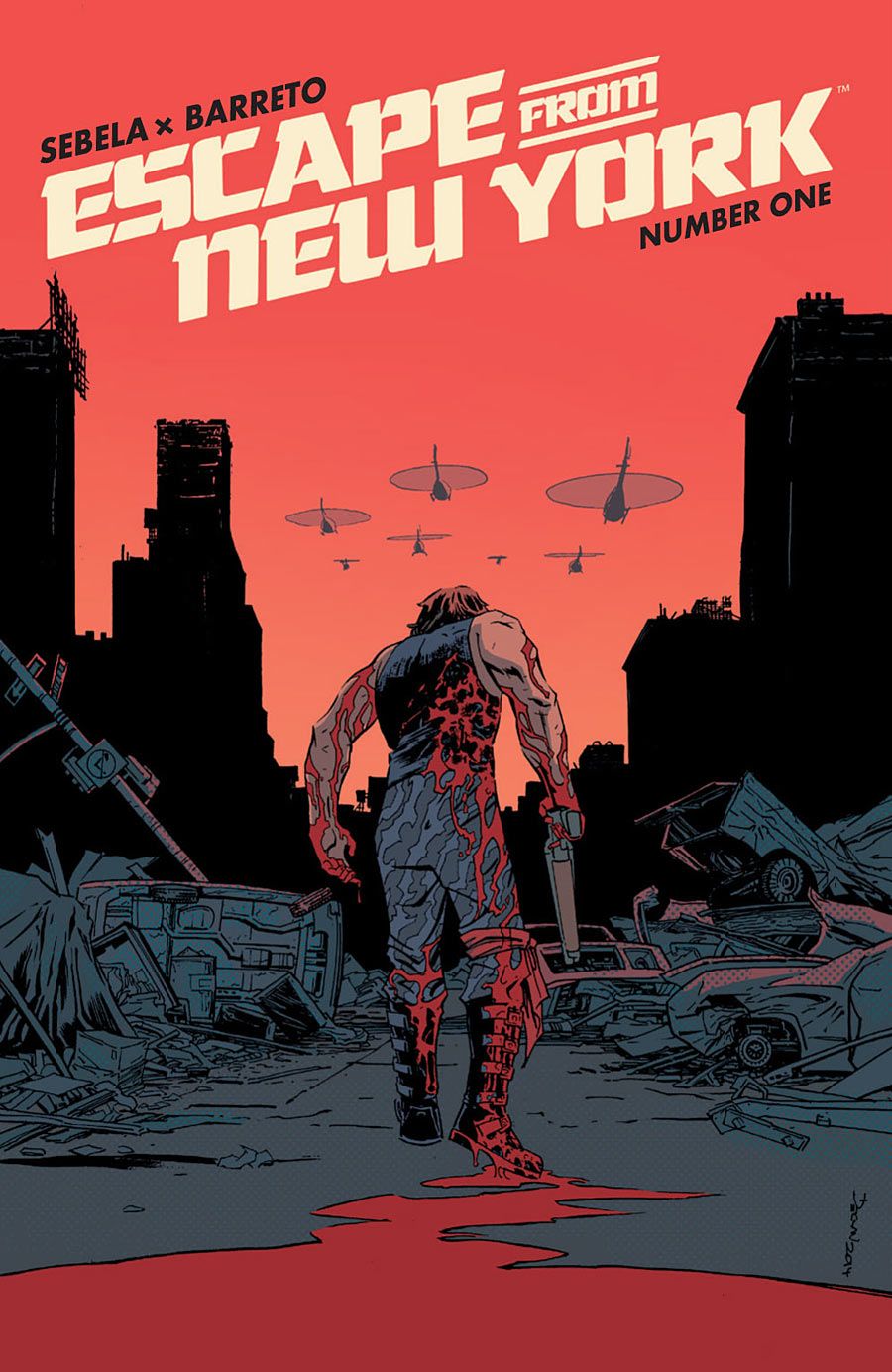Whatever its other flaws, "Escape from New York" #1 exactly captures the spirit and cynicism of the 1981 movie that inspired it. The series picks up from the minute that the original film ends, just as the President's switched tape begins to play, and follows Snake Plissken's decision to its inevitable consequences. While the tone is spot-on, it's unfortunately the best thing about the book. The artwork and script need polishing, and the colors don't set much of a tone. The series has some fun, smart ideas in the wings, but it needs to execute on them a little better.
Writer Christopher Sebela is pretty perfectly wired into the post-Watergate disillusionment and cynicism of John Carpenter's original script. Lines like "America wants you dead, Snake. Don't tell me the feeling isn't mutual." and "Anywhere the U.S. police force can't go sounds pretty nice." are full of indictment for a system that's made itself unworthy of allegiance. (The President even riffs on Nixon with the claim that "It's not wrong if the President does it.") Sebela's tone makes a real argument for why "Escape from New York" deserves a series. Snake's distaste for the government feels timely and relevant to our current political climate. (The vision of Florida as a post-apocalyptic, gun-loving secession state is also just so well-imagined.)
Though the script accomplishes so much on a macro level, Sebela has work to do on the micro. The dialogue in "Escape from New York" #1 is serviceable, and there a few punchy lines, but it doesn't do much to further the characterization of anyone. Sebela can fairly expect that most readers know something about Snake, but even the new characters don't get much development or distinctiveness of voice. When Snake hitches a ride in a van full of would-be Floridian immigrants, all of the characters sound very much alike. Even bit parts shouldn't feel this indistinguishable.
Diego Barreto and Marissa Louise's artwork doesn't always rise to the challenge of the script or source material. The helicopter chase, in particular, is difficult to follow. This is both a problem of viewpoint and color. Barreto's panels zoom in and out, from close-ups of Snake at the wheel to panned-out shots of the larger action in the air. It's theoretically a fine way to build tension and help the reader feel in the moment. However, in the panned-out panels, it's not often clear which helicopter corresponds to the cockpit in the previous panel. Marissa Louise could have saved the panels with some better color identification, but Barreto also should have incorporated some means of identification into his linework. This scene is representative of a wider problem: the individual panels are nicely composed, but the storytelling from one to the next isn't always as thoughtful.
I quite like Marissa Louise's colors in the last third of the book, but they really don't establish the atmosphere in the first part. Louise goes for a grey-heavy palette that feels flat rather than atmospheric, and it made all those helicopter scenes and chases through the woods feel decidedly less immersive. When Snake arrives in Florida, though, the flatness of the colors creates such a cool effect, transforming the colors of coastal tourism into something harsh and strange.
Letterer Ed Dukeshire does really great work with captions that frequently take place off-panel. This method allows for a speed up of the story, placing exposition from the past over activities from the present so that each doesn't require its own panel. It's a smart way to cram things in, but it requires real clarity in the captions to work, and Dukeshire accomplishes that.
"Escape from New York" #1 is a thematically impeccable, technically average issue that stews with exciting ideas. As it moves forward, I hope it will build on the strength and momentum of those ideas to enhance the characterization and flow.

